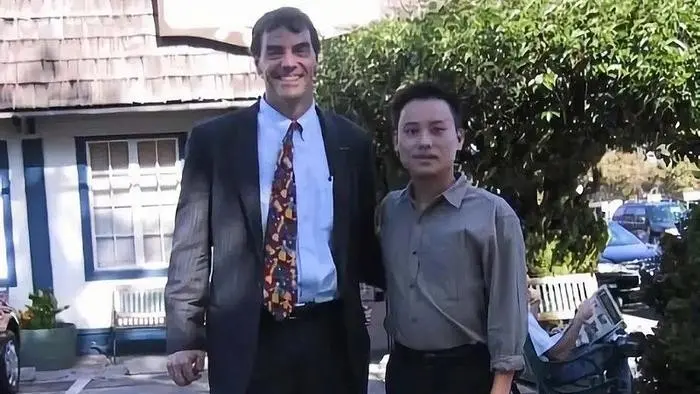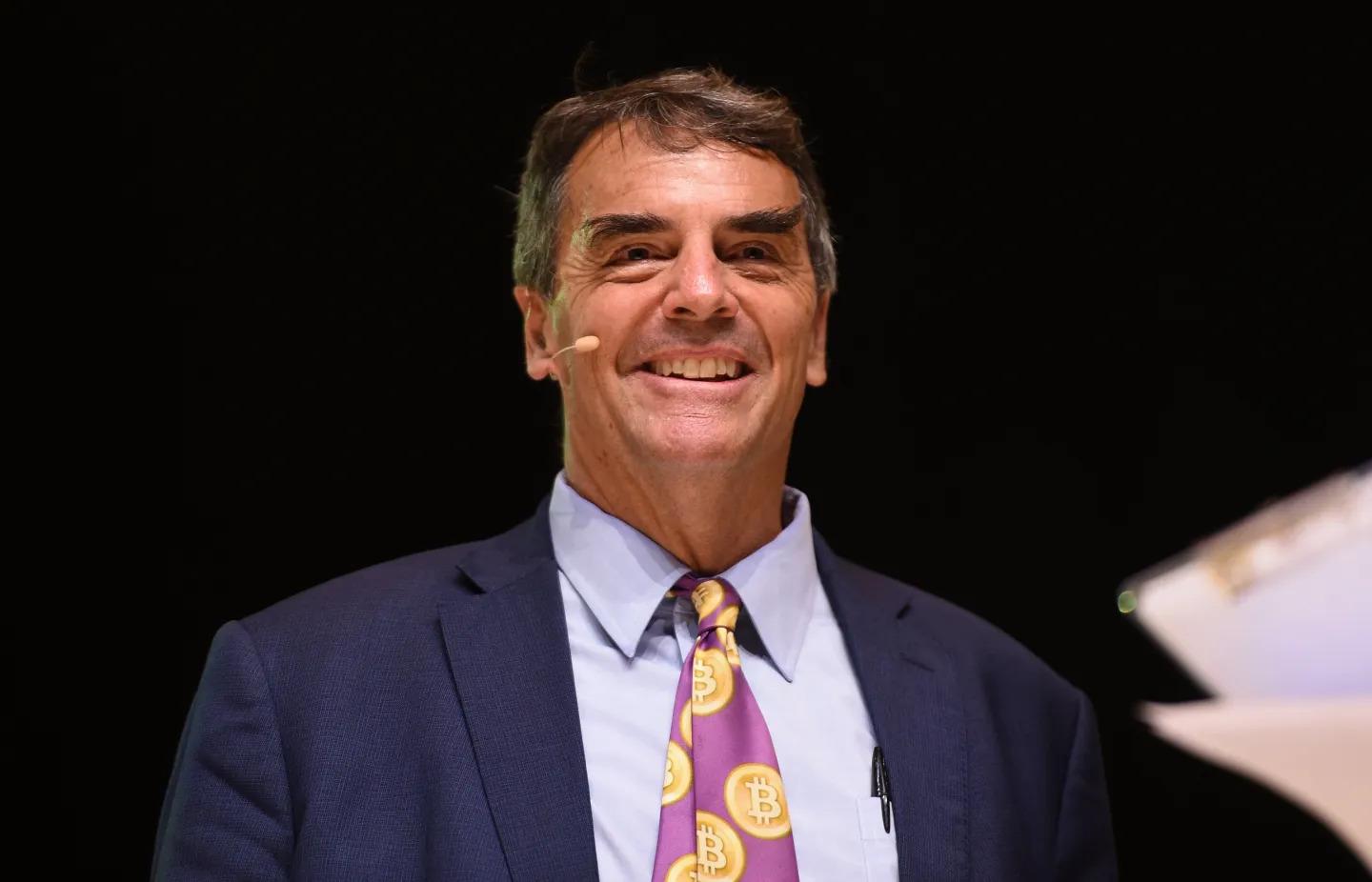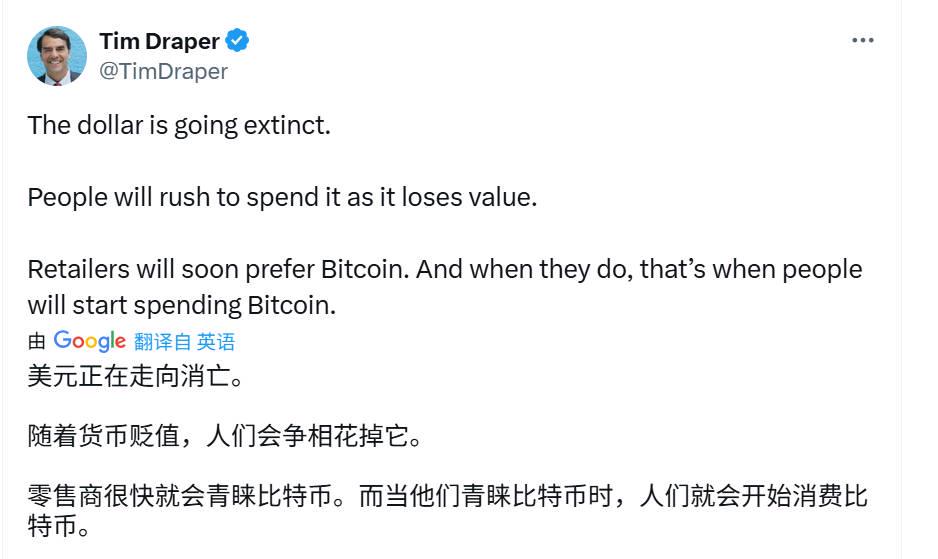The "vision" of Mai Gang is attributed to his early mentor during his studies in the United States—Silicon Valley's renowned venture capitalist Tim Draper.
Author: Weilin, PANews

The explosive popularity of the trendy toy brand Pop Mart has once again made its first angel investor, Mai Gang, a focal point of market discussion. In the summer of 2012, just five days after meeting Pop Mart's founder Wang Ning, Mai Gang invested in the company. As Pop Mart's first angel investor, Mai Gang witnessed its journey from a modest residence in Beijing to its listing in Hong Kong.
In fact, Mai Gang's "vision" is partly due to his early mentor during his studies in the United States—Silicon Valley's renowned venture capitalist Tim Draper. Mai Gang entered the Chinese venture capital scene in 1998, co-founding Shanghai Pudong Science and Technology Innovation, and later studied in the U.S., where he won first place in a startup competition at UCLA, thus connecting with the godfather of Silicon Valley venture capital, Tim Draper. In 2005, he co-founded the startup incubator VenturesLab with Tim Draper.
Tim Draper is known as the "father of venture capital," and the projects he has invested in have driven some of the most innovative developments in today's market, including Skype, Baidu, Hotmail, and Tesla. He is also an early and staunch believer in Bitcoin.

Family Legacy and Silicon Valley Genes: The Continuation of the Third Generation of Investors
Draper comes from a family with a background in venture capital and politics, being the third generation of this family. His father was the founder of Draper & Johnson Investment Company and served as the chairman and president of the Export-Import Bank of the United States. In 1994, Draper's father returned to the investment circle after public service and co-founded Draper International, the first U.S. VC fund focused on investing in Indian companies.
Tim Draper's grandfather, William Henry Draper Jr., founded the venture capital firm Draper, Gaither and Anderson in 1958, creating the basic rules of today's VC, including management fees and profit-sharing after the exit of invested companies. Draper's grandfather also served as the first U.S. ambassador to NATO.
In such a family with both financial and political backgrounds, Draper displayed a unique perspective early on. He attended Phillips Academy Andover and then entered Stanford University, where he earned a bachelor's degree in electrical engineering in 1980. In 1984, he obtained an MBA from Harvard Business School.
In 1985, Tim Draper founded Draper Fisher Jurvetson (DFJ) and later expanded to create Draper Venture Network, Draper University, and several other entrepreneurial and startup education platforms.
Tim Draper's most notable investments include Baidu, Hotmail, Skype, Tesla, SpaceX, AngelList, Twitter, Coinbase, Robinhood, and Twitch.
In the early 2000s, when foreign capital was generally withdrawing from China, Draper chose to stay and ultimately successfully invested in Baidu through DFJ. He was also one of the first Silicon Valley figures to enter the Chinese venture capital industry. In 2005, he co-founded "VenturesLab" with Mai Gang and others, becoming an important participant in China's entrepreneurial ecosystem, and in the crypto space, VenturesLab became an angel investor in OKX.
In 2018, Draper University, founded by Tim Draper, established a base in Beijing's Zhongguancun through a training camp called dCamp to cultivate blockchain talent, attracting many crypto OGs to participate.
Draper has also invested in several early crypto projects, such as Ethereum, Coinbase, Ledger, Bancor, Arkham, Ark, Merzo, and Propy.

Connection to Bitcoin: From 40,000 Bitcoins "Disappearing" to a Firm Believer
Today, Tim Draper's investment footprint in the crypto space is ubiquitous. However, compared to the period from 2014 to 2020, Draper's investments in the crypto field have been less frequent in recent years, as he primarily promotes Bitcoin in public forums.
Draper's interest in Bitcoin began in 2011, just two years after Bitcoin's inception. He met CoinLab founder Peter Vincennes through investor Joel Yarmon. CoinLab later became an innovative company focused on Bitcoin and miners, and it was also the largest partner of the then-largest exchange, Mt. Gox, in the U.S. At that time, the concept seemed a bit distant, but he was very interested and made a small investment in the company. Draper then asked if he could help him purchase $250,000 worth of Bitcoin, which was priced at about $6 each at the time. Peter helped him buy some and stored them in Mt. Gox. Peter also mentioned that he would use part of the money to purchase ASIC high-speed mining chips from the mining machine manufacturer Butterfly Labs to mine more Bitcoin at a lower cost.
Two events then occurred that caused the approximately 40,000 Bitcoins that should have been obtained to "disappear." First, the mining chips were delayed in delivery. Butterfly Labs did not send the chips to Peter as promised but instead used them to mine Bitcoin for several months before finally shipping them. During those months, more miners entered the market, significantly reducing the probability of mining Bitcoin. By the time Peter finally received the chips, Draper and his partners had missed the best mining window. Worse still, Peter stored the Bitcoins he mined in a wallet controlled by Mt. Gox, and these Bitcoins ultimately vanished with the theft of Mt. Gox, making him one of the largest creditors of Mt. Gox.
However, this loss did not shake Draper's confidence; instead, it sparked his respect for the resilience of the Bitcoin system—despite experiencing a major theft, Bitcoin only dropped about 20% and continued to be actively traded.
Draper realized that the demand for this new type of digital currency was so strong that even in the face of significant theft, it could continue to develop and might even provide us with a new way to transact, store value, and transfer money. The societal demand for Bitcoin is so intense that people are willing to tolerate major mistakes and fraud just to have such a frictionless, globally accepted currency system.
In 2014, after the U.S. Marshals Service seized Bitcoin from Silk Road, they auctioned off more than 30,000 Bitcoins. Draper saw this as an opportunity to recover his losses. A total of 31 bidders participated, each able to bid on nine blocks (each containing about 4,000 Bitcoins). At that time, the market price of Bitcoin was $618 each. At the last moment, Draper decided to bid above the market price, offering $632, and ended up winning all nine blocks.
Draper quickly realized that he could do something meaningful with these Bitcoins—such as promoting the adoption of Bitcoin in developing countries. In these countries, people generally lack confidence in their national currencies, often due to government overprinting of money for personal gain, leading to increased corruption and worsening inflation. Worse still, low-income individuals in these countries are often unbanked, as banks consider them "unbankable." These individuals represent about 3 billion of the world's "unbanked," and Bitcoin could be their solution.
Predicting Bitcoin will rise to $250,000 by 2025, "Bitcoin will replace the dollar"
In Tim Draper's view, the advantages of Bitcoin are very clear:
1) It is a globally accepted currency that does not require government intervention;
2) It is a way to preserve value without needing to store precious metals or artworks;
3) It is a frictionless currency that can flow automatically according to contracts without the need for lawyers or accountants to explain or intervene.
He believes that Bitcoin and its underlying technology, blockchain, are the engines driving human progress. The U.S. wisely did not impose regulations on the internet initially, allowing a large number of internet entrepreneurs to establish themselves in the U.S., ultimately leading to the prosperity of the internet economy. Today, if a similarly "light-touch" strategy can be applied to Bitcoin regulation, it will continue to attract innovators to stay in the U.S.

In May of this year, Tim Draper repeatedly stated that the dollar is rapidly becoming worthless and strongly advocated for Bitcoin as an alternative. He reiterated this point in perhaps the most straightforward way. "The dollar is heading towards extinction," he stated on social media platform X, "As the dollar depreciates, people will rush to spend it." In contrast, Draper believes people will turn to Bitcoin for security.
"Retailers will soon prefer Bitcoin," he said, "When that happens, people will start using Bitcoin for consumption." His latest statement was in response to the renewed debate by Bitcoin financial services company Swan about whether Bitcoin is a store of value or a medium of payment.
Draper believes that the widespread adoption of Bitcoin as a medium of payment may happen sooner. In May, he told CoinDesk that he expects Bitcoin to replace the dollar as the global reserve currency within ten years. By then, he even predicts that Bitcoin will have "infinite value compared to the dollar." However, in the short term, he expects Bitcoin to reach a price of $250,000 by 2025.
One reason for Draper's increasing pessimism about the dollar is the poor performance of the dollar index (DXY) this year, reflecting a decline in market confidence in the dollar. He pointed out that the weakness of the dollar index is related to global concerns about President Trump's trade policies.
Investment Philosophy: Cycles Set at 5 to 10 Years, Passion Over Data
As a venture capitalist, Draper has summarized his six core investment principles in an external interview:
Do not invest too much money in a single company early on: One of the biggest mistakes Draper has seen many investors make is "investing too much money in the first few companies they invest in… Don't invest as much as you 'think you want to invest' because you may encounter cash flow issues later." He suggests investing only half to one-sixth of the amount you originally intended, as it is likely that the company will need multiple rounds of financing later. When the company is doing well, you want to ensure you still have funds available to continue supporting and encouraging these "winners."
Set investment cycles at 5 to 10 years: Some investments take a long time to pay off, and he warns against getting trapped in projects with overly long cycles. His advice is: "I wouldn't think too far into the future… You should think within a time frame of 5 to 10 years."
Do not project your entrepreneurial experience onto others: If you are a successful entrepreneur starting to invest in others, it is easy to impose your experiences and personality onto those seeking funding. He cautions: "You might initially think, 'Hey, I can do it, so can others.' You will start throwing money around. You will assume everyone is like you and can do what you have done. But reality is not like that. You need to calm down and really think about whether this person is truly willing to make the sacrifices for success that you once made."
Focus on the mission, not the money: In the early investment stages, do not start with the mindset of "how much money can I make." Draper says: "If you are thinking 'I can make money from this'… then you might as well not do it. You should invest for the mission. If you can genuinely identify with the other party's mission, saying, 'I love this mission, I love the way it will change the world, and I want to be a part of it,' that kind of investment is healthier."
Invest based on "passion," not "data": During a fundraising roadshow, there was an entrepreneur who began to show him financial models, and Draper appeared somewhat indifferent and uninterested. The entrepreneur thought he was losing this potential investor. After a break, he and his partner adjusted their strategy, returned to the meeting room, and began to sincerely discuss their dissatisfaction with the current state of the industry and the changes their company hoped to bring. When I later mentioned this experience, Draper responded, "You might have said it right. I am looking for passion."
Conclusion
To this day, while Bitcoin is still sometimes questioned as a "bubble," Tim Draper has already gone "all in"; while mainstream capital remains cautiously observing Web3, he is already cultivating talent, building infrastructure, and investing in visionaries for the next era. He does not see himself as a speculator but as a driver of change.
Perhaps in the eyes of Pop Mart investor Mai Gang, Draper is not only a mentor but also someone who "ignites a spark in the cold winter of capital."
His actions continue to resonate. Whether Bitcoin will truly replace the dollar cannot be definitively stated, but it is certain that Tim Draper has placed all his bets on that possible world.
免责声明:本文章仅代表作者个人观点,不代表本平台的立场和观点。本文章仅供信息分享,不构成对任何人的任何投资建议。用户与作者之间的任何争议,与本平台无关。如网页中刊载的文章或图片涉及侵权,请提供相关的权利证明和身份证明发送邮件到support@aicoin.com,本平台相关工作人员将会进行核查。




